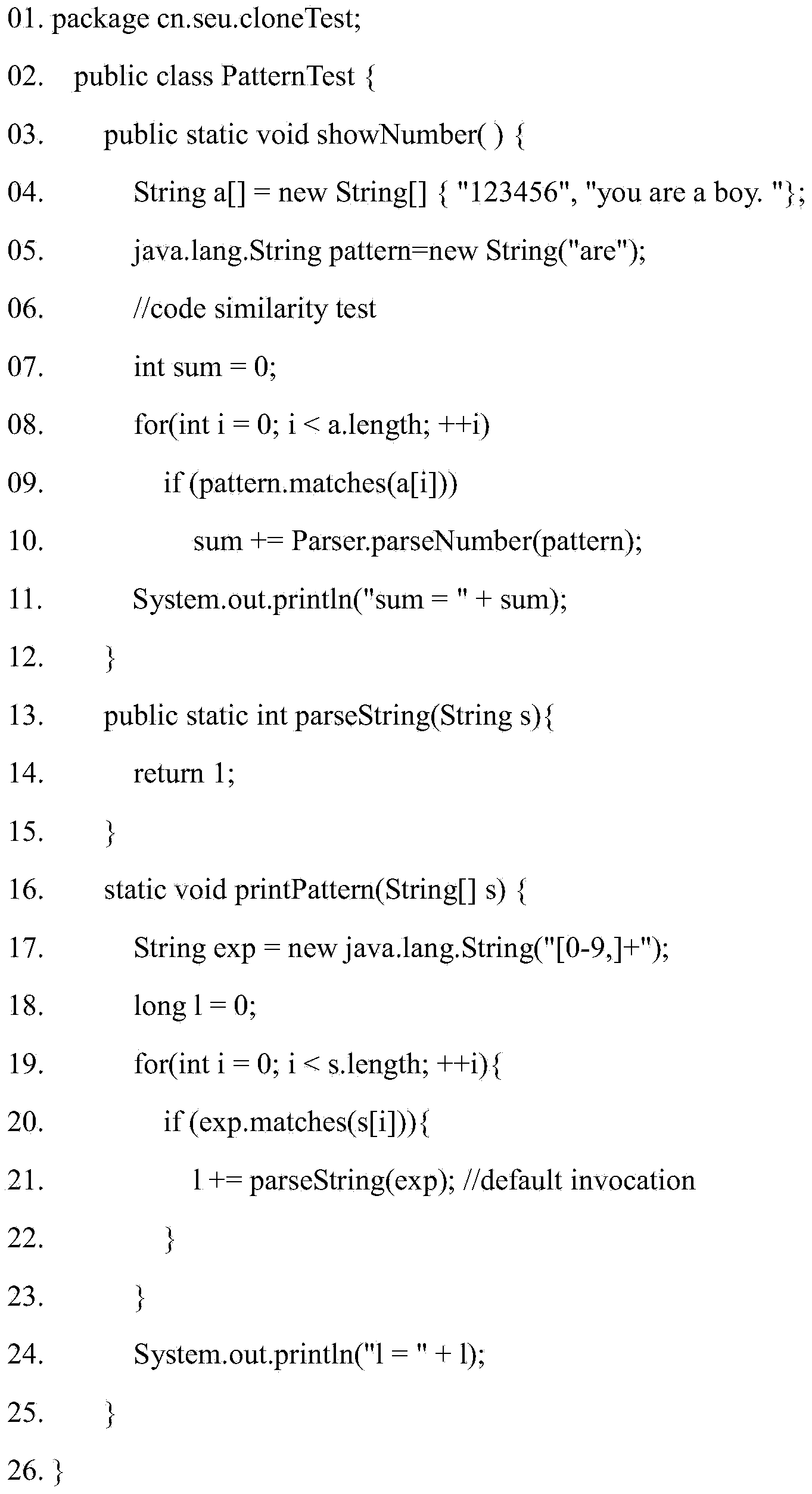Software reusing method based on code clone automatic detection and timely prompting
A software reuse and automatic detection technology, applied in the direction of program control devices, etc., can solve problems such as difficulty in supporting automatic real-time detection, memory and time consumption, and great effort, etc., to achieve large-scale real-time detection and simple data structure implementation , the effect of optimal space-time complexity
- Summary
- Abstract
- Description
- Claims
- Application Information
AI Technical Summary
Problems solved by technology
Method used
Image
Examples
Embodiment
[0067] 1. The following will illustrate the entire operation process through specific codes.
[0068]
[0069] Step 1), utilize the generation tool of lexical analyzer to generate the Java lexical analysis program based on token; The lexical analyzer generation tool that the present invention adopts is Jflex;
[0070] Step 2), standardize the source code: input the code that has been developed in the project and the code segment of the current editing area into the Java lexical analysis program generated in the step 1) respectively, generate the token value corresponding to each source file, in During the generation process, irrelevant information such as packages, comments, and spaces in the code are filtered. Among them, cn.seu.cloneTest in the first line of code is the package name. The intermediate code after standardizing the source code is as follows:
[0071] classN {
[0072] TN(){
[0073] TN[]=newT[]{};
[0074] TN = newT(0);
[0075] TN=0; ...
PUM
 Login to View More
Login to View More Abstract
Description
Claims
Application Information
 Login to View More
Login to View More - R&D
- Intellectual Property
- Life Sciences
- Materials
- Tech Scout
- Unparalleled Data Quality
- Higher Quality Content
- 60% Fewer Hallucinations
Browse by: Latest US Patents, China's latest patents, Technical Efficacy Thesaurus, Application Domain, Technology Topic, Popular Technical Reports.
© 2025 PatSnap. All rights reserved.Legal|Privacy policy|Modern Slavery Act Transparency Statement|Sitemap|About US| Contact US: help@patsnap.com



